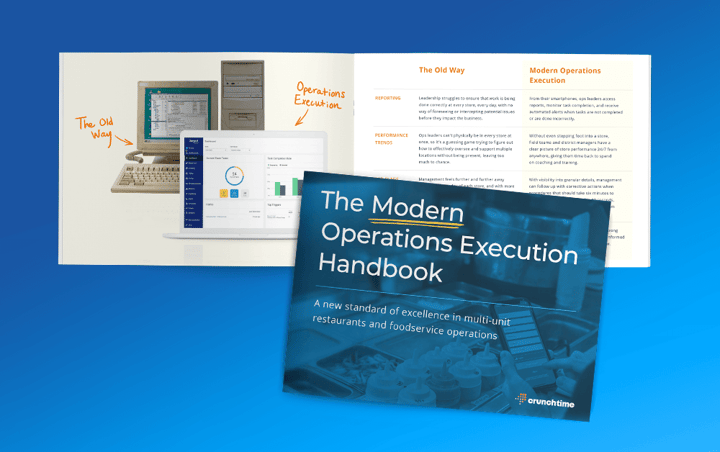
- Home
- Crunchtime Blog
- What Are Standard Operating Procedures in Restaurants?
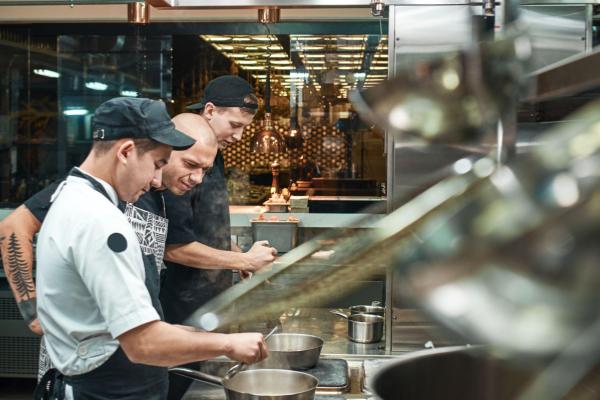
What Are Standard Operating Procedures in Restaurants?
Plus, 5 ways to improve compliance with standard operating procedures
Whether you run a restaurant business with 500+ locations or a handful of convenience store locations, you know what work needs to be done – and how it should be done properly – to run your business effectively. From how to set up the store before opening to how certain foods should be prepared to certain areas should be sanitized, having a standard way of doing things makes work more efficient and gives you confidence that employees will do work the right way even when you’re not there. As businesses grow and open more locations, developing these standard restaurant operating procedures (SOPs) becomes infinitely more critical in order to run an efficient and profitable business.

Historically, operators have relied on paper checklists and field management teams to roll out and enforce their standard restaurant operating procedures and as part of their retail operations management. While these methods help communicate SOP details to a degree, there is little to no accountability built into the system and it is next to impossible to roll out changes quickly. Even with the use of phones, texting, and email, it has been difficult for operations leaders to know if their teams in every store actually follow through on the work they are supposed to do. In fact, only 12% of Operations leaders report that it is "very easy" to roll out and ensure adherence to new initiatives, according to findings from our 2023 Restaurant Operations Report.
Operators today are investing in new processes and technology to address this challenge, to not only roll out new standard restaurant operating procedures more effectively but to hold their teams accountable for doing the work well. But before you start rethinking your approach to enforcing standard restaurant operating procedures, you’ll want to revisit your understanding of exactly what standard restaurant operating procedures are, look at some common examples and areas to prioritize, and explore new approaches to enforcing compliance.
What are standard operating procedures in restaurants?
Standard operating procedures (SOPs) are instructions on how specific work or tasks should be completed. Restaurants, convenience stores, and other retail chains that operate multiple locations use SOPs to bring consistency to their operation – from how hands should be washed to how a store is opened and closed every day to how food is prepared – and run each store with the level of quality and efficiency that customers should expect no matter which location they visit.
Standard restaurant operating procedures help staff and leadership do their jobs better and ultimately, make customers happier. A store manager with SOPs for how the restaurant should be cleaned every day feels confident that they can do the work correctly to maintain a healthy, good looking space and be in line with expectations from their district manager. Likewise, a VP of operations can more effectively manage each location knowing that chicken is being stored correctly in every store she oversees.
What are common examples of standard operating procedures in restaurants?
The details included in standard restaurant operating procedures can be as specific as needed, from how frequently and how long employees should wash their hands, to more task-oriented work such as a 14-item checklist for how to close down the makeline at closing. Here are some common retail operations management processes that operators try to standardize across every location:
- Food safety procedures: from preparing to serving to storing food, what are all of the steps that need to be taken to ensure that product is being held and prepared in a safe manner?
- Store opening/closing: what are all of the tasks that need to be completed in order to open and close the store the right way to ensure that the location looks right and is prepared for the day?
- Pre-rush readiness check: many operators have found that getting certain work done just before a rush of customers can set up the store to be more successful and maximize their time and sales.
- Product quality check: brands often have expectations for how food should look when it is given to customers and will ask stores to periodically share photos to show compliance with the quality expectations.
- Inventory audit: different products and items run out of stock more quickly than others; standardizing the expectations for when and how frequently each product should be prepared or restocked.
- Shift change: mid day, what work needs to be done in order to change over to a new team and help them be successful and ready for the next shift?
- Employee training and onboarding: what training videos, paperwork, and other tasks need to be completed for each employee in each location?
Each restaurant operating procedure might include several or even dozens of steps, with guidance on how each step should be done. While rolling out operating procedures is a challenge in itself, holding employees accountable for doing them correctly is still harder.
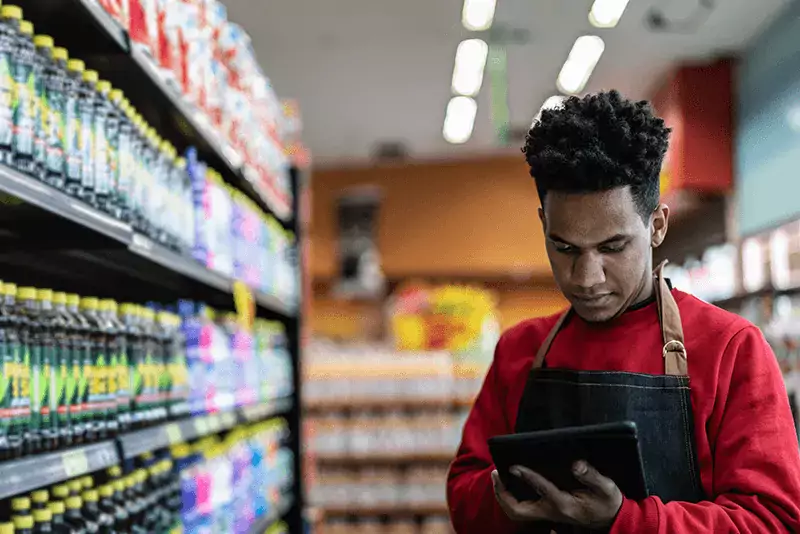
How do you enforce standard operating procedures?
The challenge operators have faced for decades is that it can be difficult to know what work is or isn’t actually happening in each store, much less if each restaurant or location is actually complying with standard operating procedures. The key to enforcing standard operating procedures is accountability – helping staff feel responsible for doing the work correctly, while using tools to verify whether or not the work has been done.
In the past, paper checklists have been used to hold a store manager accountable for work such as maintaining a complete record of food temperatures or performing a monthly food safety audit. Teams of district managers are hired to oversee handfuls of stores to help verify compliance and improve performance with in-person coaching, but are often stretched thin across too many locations and cannot identify or address issues quickly enough.
Today, more operators are adopting new processes and technology that enable them to more effectively hold teams accountable for doing work correctly, and course-correct in real-time when issues arise. Instead of expecting managers to do walkthroughs of the restaurant once per shift to get rid of trash, ops leaders can digitally assign the work to be completed by a specific time with instructions on how the area should look and require that photos be submitted as proof that the work was done. Or if an employee says that the beverages have not been restocked, automatically assign them a task to restock it by a certain time. District managers and other ops leaders still visit stores as much as possible, but can now keep track of and respond to retail operations management work from anywhere, and use their in-person time more effectively.
How to improve compliance with standard operating procedures in every location
Here are five key strategies to more effectively rollout and enforce compliance with your standard operating procedures:
1. Digitize your standard operating procedures
Operators are moving away from pen and paper or distributing physical “books” to standardize their operating procedures. Instead, stores and field teams are being equipped with apps on mobile devices where they can view key tasks and procedures that need to be completed every day. By making these available digitally, it’s easier for teams to complete checklists on time, quickly submit more information and photos to prove work has been done, and is all immediately available for field managers and ops leaders to see from anywhere.
2. Schedule and automatically assign standard operating procedures
VPs of operations or other ops leaders can customize digital forms that are automatically scheduled and assigned to the right people/stores as frequently as needed. Work such as a closing checklists might be assigned to store managers on a daily basis, while an internal food safety audit could be scheduled/assigned on a monthly basis. This helps teams know exactly what work needs to be done when and holds them accountable for doing it on time.
3. Show examples of successfully completed SOPs
When managing your standard operating procedures digitally, you can easily attach photos to your forms to help your teams see exactly what a “good job” looks like. Want the outside of the store to look clean? Include a photo of the front of the store with text highlighting what makes it look so good. Do you assign product quality checks? Attach a photo of what “grade A” product looks like before it should be given to customers. This added instruction makes things clearer for your team and sets them up to be more successful.
4. Automate alerts and follow up tasks for standard operating procedures
When certain work or tasks aren’t done right, the first step is to actually identify the problem, and the second but equally important step is to ensure that the problem is addressed. When tracking SOPs through an operations execution platform, you can automatically assign a follow-up task to have your team address it. For example, if an internal audit finds that certain items are out of stock, a task would be assigned to restock that item by a certain date. Or if the temperature of a walk-in freezer goes too high, managers can receive text alerts and go fix the problem immediately.
5. Use reporting to identify top-performing and underperforming stores
Instead of going store to store collecting forms and spending hours in an excel doc making sense of outdated information, what if you could spot top- or underperforming stores in real-time? Operations execution platforms enable ops leaders to instantly spot the most pressing issues or find the most pertinent information, such as spotting a higher than average completion rate for shift change checklists in a certain region, to finding that cash registers are being left with too much cash by the end of the night.
Rethinking your approach to standard operating procedures
Whether you’ve already spelled out clear steps for how to do key tasks across your stores, or are just thinking about documenting the best way to do certain types of retail operations management work, more companies are looking to technology to improve how teams execute against these SOPs across every one of their stores.
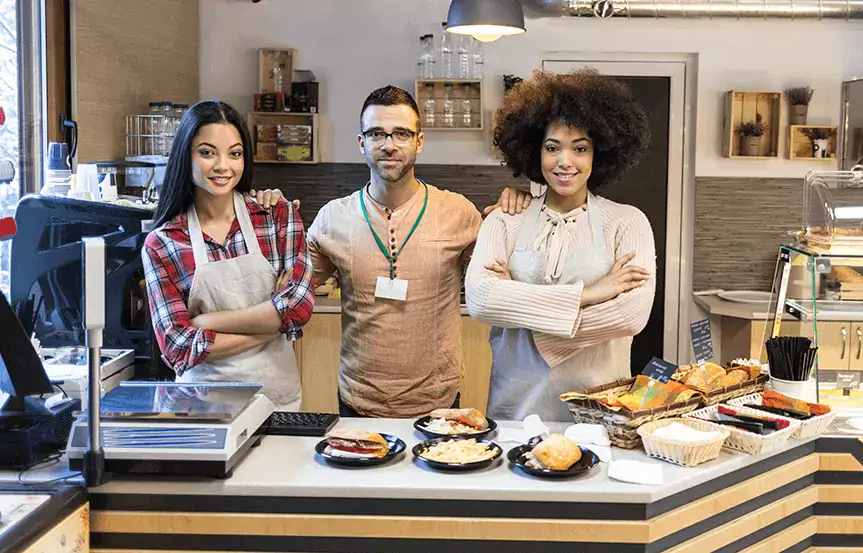
Share this post
Related

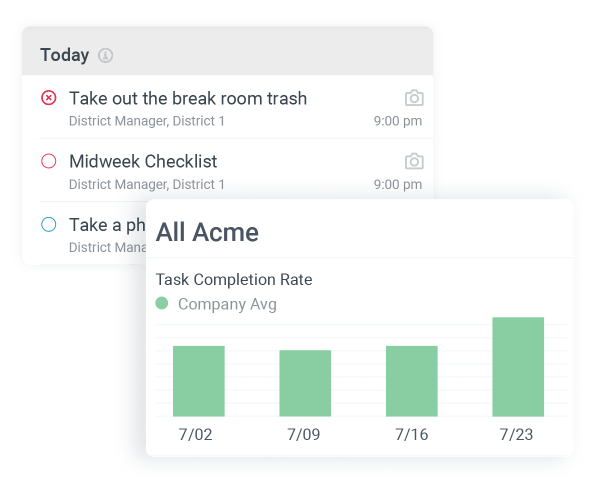
How Leading Restaurants Use Checklists to Optimize Operations
